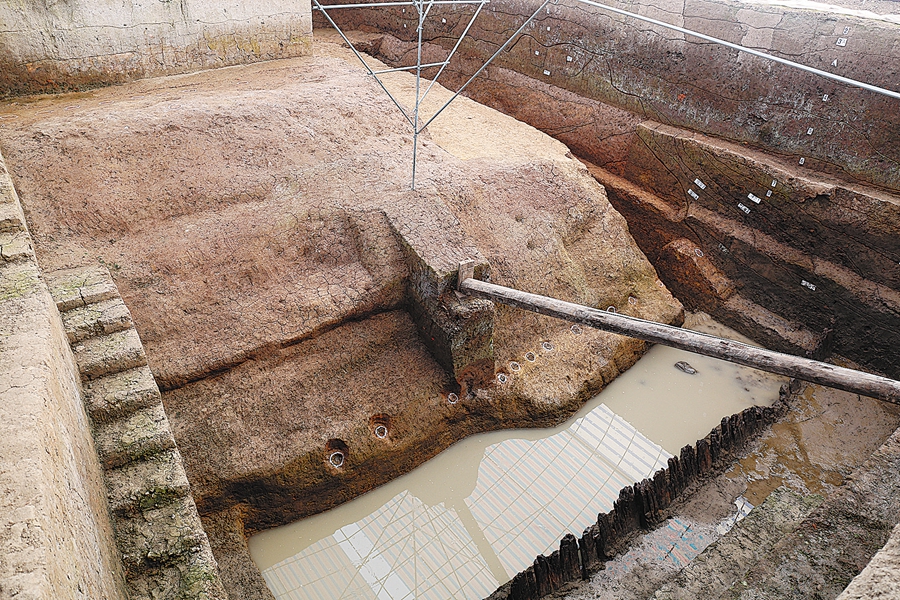

Zan, who started excavation in 2017 at the Shijiahe site, says their work, searching for buildings used by higher echelons of society in the ancient city of 1.2 million square meters, is to figure out functions of these types of buildings and who actually lived there.
Some ruins of houses and large-scale buildings have been discovered after years of excavation. Pottery, stone axes and even a piece of a woven reed mat were found in rooms built thousands of years ago.
Fang Qin, director of the Hubei Provincial Institute of Cultural Relics and Archaeology, says that some findings prove that there might have been palaces, suggesting that rulers or kings probably existed.
"A ruler or a king represents a civilized society. Previously, we've found lots of sophisticated jade pieces inside tombs, which also proves that there might have been high-ranking groups living here," explains Fang.
Shijiahe site was discovered in 1954. A large number of pottery, jadeware and stone tools have been unearthed to show the glory of an early civilization developed at the middle reaches of the Yangtze River. Now, the search for buildings, where high-level formal functions were held, will offer a more comprehensive understanding of the civilization.